+8801715532130
Gulshan-2, Notun, Bazar, Dhaka 1212

Showing all 6 results
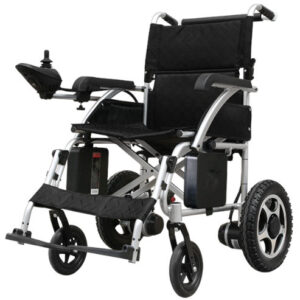
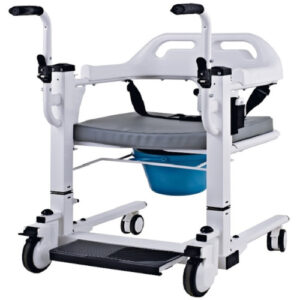
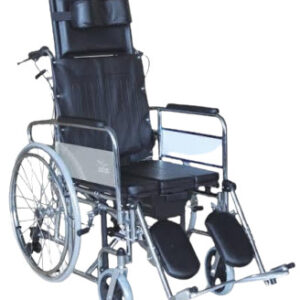
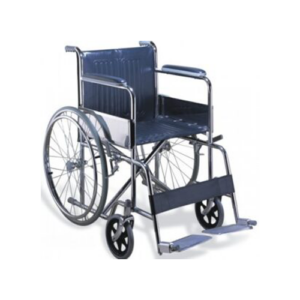
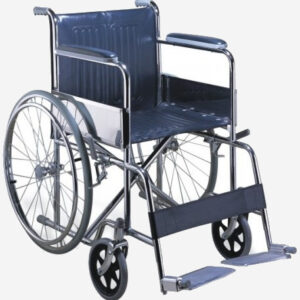
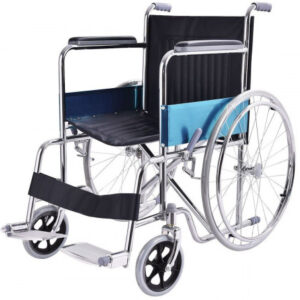
The price of wheelchair in Bangladesh starts from 8500/- taka to the highest price of 85000/- taka, it includes standard manual , commode , electric wheelchairs.
You can buy wheelchairs from us for your family, old parents, children, sons and daughters, and your close relatives.We sell wheelchair at cheap price in Bangladesh.
| Serial No : | Wheel Chair Price List in Bangladesh | Price (BDT) |
|---|---|---|
| 1 | Dayang DY01114LA Folding Electric Wheel Chair Price in Bangladesh | 85,000/- (BDT) |
| 2 | Dayang DY077600 Medical Transfer Wheelchair Price in Bangladesh | 38,000/- (BDT) |
| 3 | Kaiyang KY607GCJ-46 Commode Wheelchair Price in Bangladesh | 16,000/- (BDT) |
| 4 | Kaiyang KY809-46 High Strength Aging Resistant Wheel Chair Price in Bangladesh | 9,000/- (BDT) |
| 5 | Kaiyang KY809-46 High Strength Resistant Wheel Chair Price in Bangladesh | 9500/- (BDT) |
| 6 | Standard Manual Folding Wheelchair KY-809 Price in Bangladesh | 8,500/- (BDT) |
A wheelchair is a mobility aid device that is used to help people with limited mobility or disabilities to move around. It typically consists of a seat, backrest, footrest, and two large wheels on the back, and two smaller wheels in the front that can swivel.
The user of the wheelchair sits in the seat and uses the footrests to support their legs. They can move the wheelchairs forward or backward by pushing the large rear wheels with their hands or using a set of hand rims mounted on the wheels.
Some wheelchairs also have additional features such as brakes, adjustable footrests, and reclining backrests. There are manual wheelchairs that are self-propelled, where the user must physically move the wheelchair using their hands, and there are electric wheelchairs, which are powered by a battery and can be controlled using a joystick or other electronic device.
Overall, a wheelchair is a crucial mobility aid that enables people with mobility limitations to move around independently and improve their quality of life.
People who use wheelchairs are those who have difficulty walking or standing for prolonged periods of time due to a variety of reasons, including but not limited to:
Physical disabilities: This includes conditions such as spinal cord injuries, cerebral palsy, muscular dystrophy, multiple sclerosis, amputation, and other conditions that affect mobility and movement.
Chronic illnesses: Conditions such as arthritis, lupus, and chronic fatigue syndrome can cause severe pain and fatigue that make it difficult to stand or walk.
Neurological disorders: Conditions such as Parkinson’s disease, ALS (amyotrophic lateral sclerosis), and stroke can cause paralysis or weakness in the limbs, making it difficult to walk.
Age-related conditions: As people age, they may experience a decline in mobility due to conditions such as osteoporosis, arthritis, or other age-related conditions.
Wheelchairs provide people with mobility and independence, allowing them to participate in everyday activities and live a more fulfilling life.
There are various types of wheelchairs available, each designed to meet specific needs and requirements. Here are some of the most common types of wheelchairs:
Manual Wheelchairs: These are self-propelled or pushed by a caregiver, and are powered by the user’s upper body strength.
Electric Wheelchairs: These are powered by an electric motor and can be controlled using a joystick, buttons or a touchpad. They require less effort to move and can be operated by people with limited upper body strength.
Sports Wheelchairs: These are designed for people who play wheelchair sports such as basketball, tennis, or rugby. They are lightweight and highly maneuverable, allowing for quick turns and maximum speed.
Standing Wheelchairs: These allow the user to change from a seated to a standing position, promoting better circulation and reducing the risk of pressure sores.
Pediatric Wheelchairs: These are designed for children and come in various sizes and styles to suit different age groups and physical requirements.
Bariatric Wheelchairs: These are designed for people who are overweight or obese and require a wider and stronger frame to accommodate their size and weight.
Transport Wheelchairs: These are designed to be lightweight and easily foldable for easy transportation and storage.
Beach Wheelchairs: These are designed for use on sand and other difficult terrain, with large, wide wheels that can navigate uneven surfaces.
All-Terrain Wheelchairs: These are designed for use on rough terrain, such as gravel, grass, and dirt paths, and often have larger wheels with more substantial treads for better traction.
Reclining Wheelchairs: These allow the user to recline the backrest, providing comfort and pressure relief for those who spend long periods in the chair.
Properly measuring someone for a wheelchair is an essential process that ensures the user gets a wheelchair that fits them comfortably and supports their mobility needs. Here are the steps to follow:
Measure the user’s seat width: Measure the widest part of the user’s hips, then add 1-2 inches to that measurement to get the seat width.
Measure the user’s seat depth: Measure from the back of the user’s buttocks to the back of their knee, then subtract 1-2 inches to get the seat depth.
Measure the user’s seat-to-floor height: Measure from the floor to the back of the user’s knee, then subtract the seat cushion thickness to get the seat-to-floor height.
Measure the user’s back height: Measure from the seat of the wheelchair to the user’s shoulder blades to determine the back height.
Measure the user’s armrest height: Measure from the seat of the wheelchair to the user’s elbow while the user’s shoulders are relaxed and arms are at their sides. Then, add 1 inch to that measurement to get the armrest height.
Measure the user’s footrest length: Measure from the back of the user’s knee to the sole of their foot. Then, add 2 inches to that measurement to get the footrest length.
It’s important to note that these measurements should be taken by a healthcare professional or trained personnel to ensure accuracy. Additionally, the user’s medical condition, posture, and lifestyle should be taken into consideration when selecting a wheelchair.
Some common features of a good wheelchair include:
Comfort: The wheelchair should be comfortable for the user, with adequate padding and support for the back, seat, and arms.
Durability: The wheelchair should be made of sturdy materials that can withstand frequent use and rough handling.
Maneuverability: The wheelchair should be easy to maneuver, with smooth and responsive wheels, and a well-designed frame that allows for easy turning and navigating tight spaces.
Adjustability: The wheelchair should be adjustable to accommodate different body types and sizes, with adjustable footrests, armrests, and backrests.
Safety: The wheelchair should have safety features such as brakes, anti-tip bars, and seatbelts to prevent accidents.
Portability: The wheelchair should be lightweight and easy to transport, with folding or detachable parts for easy storage and travel.
Accessibility: The wheelchair should be designed to provide easy access to buildings, vehicles, and other environments, with features such as adjustable height, removable armrests, and foldable footrests.
Customizability: The wheelchair should be customizable to fit the specific needs and preferences of the user, with options for custom colors, fabrics, and accessories.
The benefits of using a wheelchair can vary depending on the individual’s needs and circumstances, but some common benefits are:
Increased mobility: Wheelchairs provide individuals with limited mobility the ability to move around independently, increasing their freedom and ability to participate in daily activities.
Improved independence: Wheelchairs can enable people to perform tasks that may have been difficult or impossible otherwise, such as moving around the house or completing household chores.
Reduced pain and fatigue: For those with mobility impairments or conditions that cause pain and fatigue, using a wheelchair can help reduce physical strain and improve overall comfort.
Better posture and positioning: Properly fitting wheelchairs can provide better posture and positioning for individuals, which can reduce the risk of developing pressure sores and other related health problems.
Increased social interaction: Wheelchairs can improve social interactions by allowing individuals to participate in activities and events with their peers and communities.
Overall, using a this can significantly improve the quality of life for individuals with mobility impairments, allowing them to move around more freely and participate in daily activities with greater ease and comfort.
Here are some tips to ensure that a wheelchair is safe and comfortable to use:
Make sure the wheelchair is the right size: The wheelchair should fit the user properly. The user should be able to sit comfortably with their feet flat on the footrests and their knees bent at a 90-degree angle. The seat width should be wide enough for the user’s hips, and the seat depth should be deep enough to support the user’s thighs.
Adjust the height of the wheelchair: The height of the wheelchair should be adjusted so that the user’s feet are comfortably on the footrests, and their arms are at a comfortable height for pushing the wheelchair.
Check the brakes: Make sure the brakes are working properly. Test the brakes to ensure that they can be easily engaged and released.
Check the wheels: Check the wheels for wear and tear. Make sure they are properly inflated, and that the tires are not damaged.
Ensure the backrest is comfortable: The backrest should provide proper support and be comfortable for the user. It should be adjusted so that the user can sit up straight without feeling uncomfortable.
Ensure the armrests are comfortable: The armrests should be at a comfortable height for the user, and they should be padded for comfort.
Ensure the footrests are comfortable: The footrests should be adjustable and should be at a comfortable height for the user. They should also be padded for comfort.
Make sure the user knows how to use the wheelchair safely: It is important to train the user on how to use the wheelchair safely. This includes proper techniques for getting in and out of the wheelchair, and how to operate the brakes and other features of the wheelchair.
By following these tips, you can ensure that a wheelchair is safe and comfortable for the user.
Maintaining your wheelchair is essential to ensure its longevity and to keep it in good working condition. Here are some tips to help you maintain your wheelchair:
Keep it clean: Regularly clean your wheelchair with a damp cloth to remove dirt, dust, and debris that can build up over time. Avoid using harsh chemicals or abrasive materials that could damage the finish or upholstery.
Check the tires: Check the tire pressure regularly and ensure they are properly inflated. Low tire pressure can cause unnecessary wear and tear on the wheels and can make it difficult to maneuver your wheelchair.
Lubricate moving parts: Keep the moving parts of your wheelchair well lubricated with a light oil to prevent rust and corrosion. This includes the wheel bearings, caster bearings, and other moving parts.
Tighten loose parts: Check for any loose bolts or nuts and tighten them up if necessary. Loose parts can cause damage to your wheelchair and may make it unsafe to use.
Check the brakes: Make sure the brakes are working properly and adjust them if necessary. This will ensure that you can safely stop your wheelchair when needed.
Store it properly: Store your wheelchair in a dry and secure place, away from direct sunlight or extreme temperatures. This will help prevent damage to the upholstery and other parts of the wheelchair.
By following these tips, you can ensure your this chair remains in good condition and lasts for many years to come.
Yes, there are several alternative mobility aids to a wheelchair, depending on the individual’s mobility needs and abilities. Some common alternative mobility aids include:
Walker: A walker is a frame with four legs that a person can hold onto while walking. It provides support and stability and is useful for people with balance issues or weakness in their legs.
Crutches: Crutches are long sticks that a person can use to support their weight while walking. They are commonly used by people who have a temporary injury, such as a broken leg, and need support while walking.
Canes: Canes are similar to crutches, but they have a single point of contact with the ground. They are often used by people who need some support while walking, but do not require as much support as a walker or crutches.
Mobility Scooters: Mobility scooters are electric vehicles that can be used by people with mobility issues to get around. They are similar to wheelchairs in that they provide a seated position for the user, but they are operated with a tiller instead of being pushed manually.
Knee Scooters: Knee scooters are similar to mobility scooters but designed for individuals with a lower leg injury or amputation. They are operated with one leg while the other leg rests on a platform.
Segways: Segways are self-balancing electric scooters that can be used as an alternative to a wheelchair for some people. They are not suitable for everyone, but they can be a good option for people with good balance and upper body strength.
Exoskeletons: Exoskeletons are wearable robotic devices that provide support and mobility assistance to individuals with paralysis or mobility impairment. They can help individuals walk or stand upright and may be a good option for some individuals with spinal cord injuries.
It’s important to consult with a healthcare professional or mobility specialist to determine the most appropriate mobility aid for your specific needs and abilities.
Yes, wheelchairs can be customized to fit individual needs. There are many factors that can affect the comfort and functionality of a wheelchair, such as the user’s height, weight, mobility limitations, and lifestyle. Customization options can range from simple adjustments to the seat height and footrests, to more complex modifications such as specialized seating systems or joystick controls.
This Chair customization can be done through a professional assessment by a qualified occupational therapist or assistive technology professional. These professionals can work with the user to determine the specific needs and preferences, and then recommend or prescribe the appropriate wheelchair and modifications.
Additionally, there are many wheelchair manufacturers that offer a wide range of customization options, from basic adjustments to full customization of the frame and components. Some manufacturers even offer custom-built this chairs that are designed and built specifically for the individual user.
Overall, customization is an important part of ensuring that a wheelchair is comfortable, functional, and safe for the user.
Wheelchair users face various challenges on a daily basis. Here are some common challenges faced by wheelchair users:
Accessibility: One of the most significant challenges faced by wheelchair users is the lack of accessibility in public places, including buildings, sidewalks, public transportation, and parking lots. This can make it challenging for wheelchair users to move around and participate fully in society.
Physical barriers: Wheelchair users face physical barriers, such as stairs, narrow doorways, and high curbs, which can make it difficult for them to move around and access certain areas.
Discrimination: Wheelchair users may face discrimination in employment, education, and other areas of life. They may also face social stigma and stereotypes.
Health Issues: Wheelchair users may be more susceptible to health issues such as pressure sores, urinary tract infections, and muscle atrophy due to the prolonged periods of sitting.
Transportation: Accessible transportation can be a challenge for wheelchair users, as public transportation may not be wheelchair accessible or may not have adequate accommodations.
Cost: Wheelchair users often face higher expenses for adaptive equipment, accessibility modifications, and healthcare than those without disabilities.
Mental Health: This Chair users may also face mental health challenges related to their disability, such as depression, anxiety, and social isolation.
Overall, wheelchair users face a range of challenges that can affect their ability to participate fully in society and lead fulfilling lives.
There are several ways that society can become more accessible for wheelchair users:
Improve physical accessibility: One of the most important ways to make society more accessible for this chair users is to improve physical accessibility. This can include adding wheelchair ramps, elevators, and wider doorways to public buildings and transportation systems, as well as making sidewalks and public spaces more wheelchair-friendly.
Increase awareness: Another important step is to increase awareness about the needs and experiences of wheelchair users. This can include training for public service employees and volunteers, as well as campaigns and educational programs that help people understand the challenges faced by wheelchair users.
Encourage inclusive design: Architects, designers, and engineers can also contribute to making society more accessible by designing buildings and products that are inclusive and adaptable for people with disabilities. This can include things like adjustable-height countertops, touchless door openers, and accessible bathroom facilities.
Promote employment opportunities: Encouraging employment opportunities for people with disabilities, including wheelchair users, is also essential for creating a more inclusive society. This can include initiatives to remove barriers to employment, as well as outreach and education programs to help employers understand the benefits of hiring people with disabilities.
Ensure equal access to education and healthcare: Finally, it’s important to ensure that wheelchair users have equal access to education and healthcare. This can include providing accessible transportation to schools and medical facilities, as well as ensuring that medical professionals and educators are trained to work with people with disabilities.
By taking these steps, society can become more accessible and inclusive for wheelchair users and people with disabilities more broadly.
Wheelchair users can travel on airplanes in several ways, depending on their level of mobility and the airline’s policies.
First, some wheelchair users may be able to board the airplane and move to their seat with minimal assistance. Others may require a wheelchair or mobility aid to move around the airport and board the plane.
In either case, most airlines require that passengers who will be using wheelchairs on the plane inform them of their needs at the time of booking or at least 48 hours in advance of the flight. This allows the airline to make the necessary arrangements, such as providing a wheelchair, arranging for assistance at the airport, and ensuring that the passenger’s seat is suitable for their needs.
Once on the plane, wheelchair users may be seated in the bulkhead seats or in a seat with movable armrests, depending on their needs. The airline may also provide an on-board wheelchair to assist with getting to the lavatory or moving around the cabin during the flight.
It’s important to note that each airline has its own policies regarding wheelchair users, so it’s a good idea to check with the airline ahead of time to ensure that you have all the information you need for a smooth and comfortable flight.
Are there any resources available for people who need a wheelchair but cannot afford one?
Yes, there are various resources available for people who need a wheelchair but cannot afford one. Here are a few options:
Medicaid: If you are eligible for Medicaid, it may cover the cost of a wheelchair. Contact your state Medicaid office for more information.
Medicare: If you are over 65 or have a disability, Medicare may cover the cost of a wheelchair. Contact your local Social Security office for more information.
Non-profit organizations: There are many non-profit organizations that provide free or low-cost wheelchairs to people in need. Some examples include The Wheelchair Foundation, Free Wheelchair Mission, and Joni and Friends.
Local disability advocacy organizations: Local disability advocacy organizations may be able to provide information and resources on obtaining a wheelchair. Contact your local Independent Living Center or Disability Rights organization for more information.
Crowdfunding: You can also try crowdfunding websites like GoFundMe or Kickstarter to raise funds for a wheelchair.
Government programs: There may be government programs in your area that can assist with obtaining a wheelchair. Contact your local Department of Health and Human Services for more information.
Gulshan -2,, Notun Bazar, Madani Avenue, Near Famally Bazar, Dhaka-1212
We are selling oxygen cylinder, oxygen concentrator & all kinds of medical equipment’s. We provide best service to our client; you can refill your oxygen cylinder easily from us.